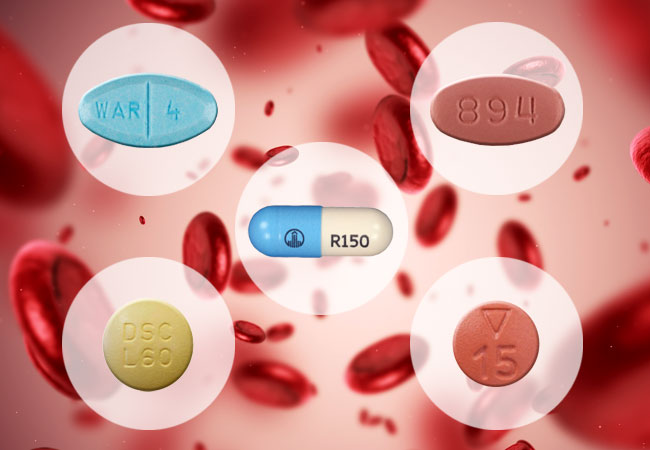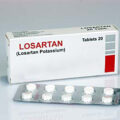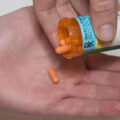Blood thinners are group of medicines that help blood flow smoothly through your veins and arteries. They also keep blood clots from forming or getting bigger. They’re used to treat some types of heart disease and heart defects, and other conditions that could raise your risk of getting dangerous clots. They can protect against heart attacks and strokes. But they also come with risks: For example, they’ll cause you to bleed more than usual when you cut yourself.
There are two class of blood thinners. The first is called anticoagulants. These keep your blood from clotting, or turning into solid clumps of cells that stick together. Most come in pill form, though some such as heparin, fondaparinux, dalteparin and enoxaparin are given as a shot or as an intravenous infusion. Some of the more widely know anticoagulants include;
- Apixaban (Eliquis)
- Dabigatran (Pradaxa)
- Dalteparin (Fragmin)
- Edoxaban (Savaysa)
- Enoxaparin (Lovenox)
- Fondaparinux (Arixtra)
- Heparin (Innohep)
- Rivaroxaban (Xarelto)
- Warfarin (Coumadin, Jantoven)
The second class of blood thinners is called antiplatelets. These target tiny particles in the blood called platelets. They come in pill form, and include:
- Aspirin
- Cilostazol
- Clopidogrel (Plavix)
- Dipyridamole (Persantine)
- Eptifibatide (Integrilin)
- Prasugrel (Effient)
- Ticagrelor (Brilinta)
- Tirofiban (Aggrastat)
- Vorapaxar (Zontivity)
How They Work
Blood thinners don’t actually make your blood thinner. Nor can they break up clots. But they do keep blood from forming new clots. They can also slow the growth of existing ones. Some anticoagulants do this by competing with vitamin K from the liver. Your body needs this to make proteins called clotting factors. These help blood cells and platelets (tiny pieces of blood cells) bind together.
How to Take Your Blood Thinner
Always take your blood thinner as directed. For example, some blood thinners need to be taken at the same time of day, every day. Never skip a dose, and never take a double dose. If you miss a dose, take it as soon as you remember. If you don’t remember until the next day, call your doctor for instructions. If this happens when your doctor is not available, skip the missed dose and start again the next day. Mark the missed dose in a diary or on a calendar. A pillbox with a slot for each day may help you keep track of your medicines.
Check Your Medicine
Check your medicine when you get it from the pharmacy.
■ Does the medicine seem different from what your doctor prescribed or look different from what you expected?
■ Does your pill look different from what you used before?
■ Are the color, shape, and markings on the pill the same as what you were given before?
If something seems different, ask the pharmacist to double check it. Many medication errors are found by patients.
Using Other Medicines
Tell your doctor about every medicine you take. The doctor needs to know about all your medicines, including medicines you used before you started taking a blood thinner. Other medicines can change the way your blood thinner works. Your blood thinner can also change how other medicines work. It is very important to talk with your doctor about all the medicines you take, including other prescription medicines, over-the-counter medicines, vitamins, and herbal products. Products that contain aspirin may lessen the blood’s ability to form clots and may increase your risk of bleeding when you also are taking a blood thinner.
If you are taking a blood thinner, talk to your doctor before taking any medication that has aspirin in it. Medicines you get over the counter may also interact with your blood thinner.
What To Do If You Accidentally Took Double Dose Of Blood Thinner
Blood thinners are considered safe when administered exactly as intended for the recommended duration of time. If you accidentally took double dose of blood thinner seek medical help immediately or call your country’s poison help line. Taking too much blood thinner can result in severe bleeding. You may undergo a prothrombin time (PT) test. This blood test measures your international normalized ratio (INR). INR is the rate at which your blood clots. An appropriate INR rate varies from person to person according to their medical history. Staying within your INR range can prevent you from bleeding excessively or clotting too easily.
Even when used correctly, blood thinners have been associated with some serious side effects such as:
- Major or fatal bleeding and haemorrhage: Because of the way they work to prolong bleeding time, there is always a risk of severe bleeding with anticoagulants, particularly in people with risk factors such as active ulceration, bleeding disorders, hemorrhagic stroke, following certain types of surgery, with kidney disease, or in people taking medicines that also increase the risk of bleeding. Any bleeding that does not stop or other signs such as persistent nosebleeds, blood in the urine or stools, heavy menstrual bleeding, or coughing up blood should be investigated further.
- Spinal/epidural hematomas: Risk is higher with LMWHs when administered to people undergoing neuraxial (spinal or epidural) anesthesia or spinal puncture. These hematomas may result in permanent paralysis.
- Thrombocytopenia (a deficiency of platelets in the blood)
- Necrosis and/or gangrene of the skin: rare, but has been associated with warfarin use
- An increased risk of thrombotic events on premature discontinuation of dabigatran (before completion of a course of therapy).
Taking your medicine as prescribed or medication adherence is important for controlling chronic conditions, treating temporary conditions, and overall long-term health and well-being. A personal connection with your health-care provider or pharmacist is an important part of medication adherence.
Here are 8 tips provided by the Food and Drug Administration that may help:
- Take your medication at the same time every day.
- Tie taking your medications with a daily routine like brushing your teeth or getting ready for bed. Before choosing mealtime for your routine, check if your medication should be taken on a full or empty stomach.
- Keep a “medicine calendar” with your pill bottles and note each time you take a dose.
- Use a pill container. Some types have sections for multiple doses at different times, such as morning, lunch, evening, and night.
- When using a pill container, refill it at the same time each week. For example, every Sunday morning after breakfast.
- Purchase timer caps for your pill bottles and set them to go off when your next dose is due. Some pill boxes also have timer functions.
- When travelling, be certain to bring enough of your medication, plus a few days extra, in case your return is delayed.
- If you’re flying, keep your medication in your carry-on bag to avoid lost luggage. Temperatures inside the cargo hold could damage your medication. ALSO READ: What To Do If You Accidentally Took Double Dose Of Adderall






